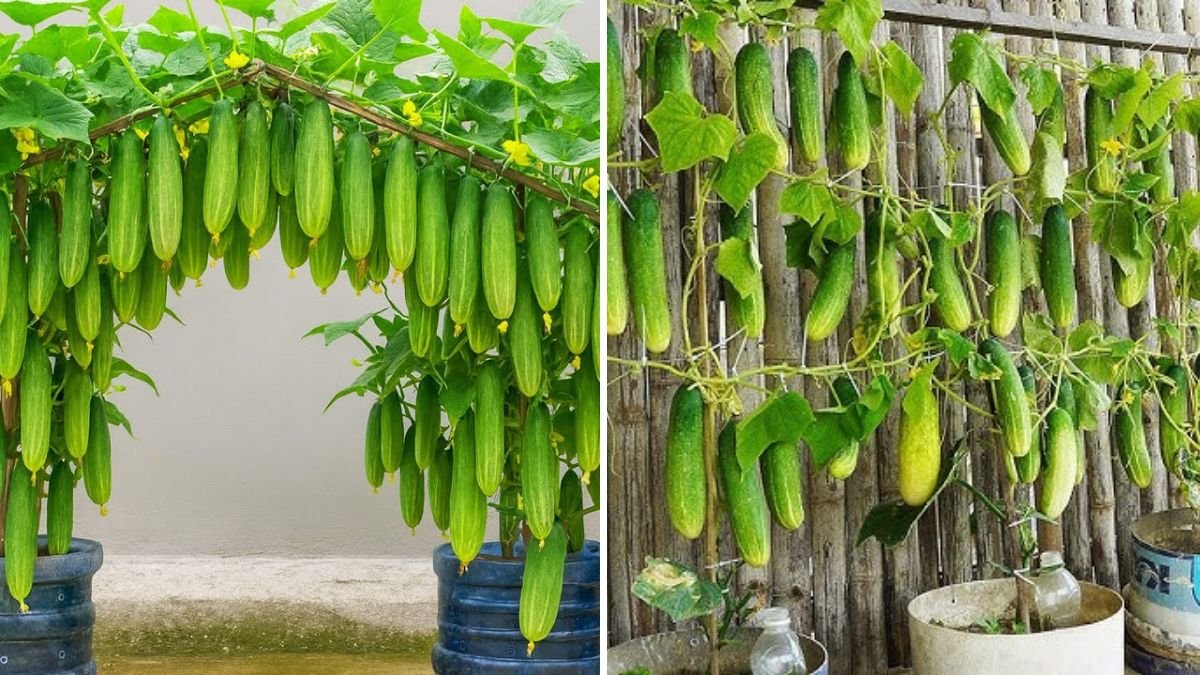Cucumbers are one of the most popular vegetables in the world, known for their refreshing taste, crisp texture, and versatility in salads, pickles, and snacks. Traditionally, growing cucumbers requires a garden or outdoor space, but what if you don’t have a yard or a large plot of land? Believe it or not, you can still grow tons of cucumbers using innovative techniques that maximize space and yield. In this article, we’ll share a proven method to grow cucumbers without a traditional garden, along with tips for achieving a bountiful harvest.
Why Grow Cucumbers at Home?
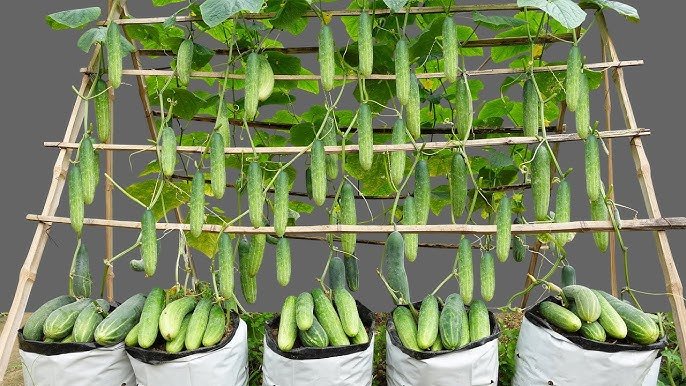
Growing cucumbers at home offers numerous benefits:
- Freshness and Flavor: Homegrown cucumbers taste sweeter and fresher than store-bought varieties.
- Cost-Effective: Growing your own vegetables reduces grocery bills over time.
- Health Benefits: Cucumbers are low in calories, high in water content, and packed with vitamins, minerals, and antioxidants.
- Control Over Growth: You can avoid harmful pesticides and chemicals, ensuring organic produce.
- Space Efficiency: With innovative growing techniques, cucumbers can thrive even without a traditional garden.
Whether you have a balcony, patio, rooftop, or indoor space, growing cucumbers is achievable with the right approach.
Choosing the Right Variety
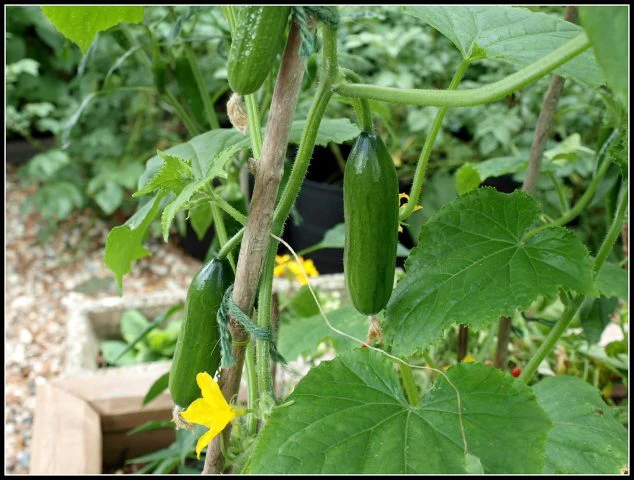
The first step to growing cucumbers without a garden is selecting the right variety. Some cucumber types are better suited for container or vertical growing:
- Bush Varieties: Compact and ideal for pots and small spaces. Examples include ‘Bush Champion’ and ‘Patio Snacker.’
- Vining Varieties: Produce longer vines and higher yields. They are perfect for trellises or vertical support systems. Examples include ‘Marketmore’ and ‘Spacemaster.’
Choosing the right variety ensures healthy growth, high yield, and easier management in limited spaces.
Container Gardening: The Secret to Garden-Free Growth
The key to growing cucumbers without a garden is container gardening. Cucumbers thrive in large containers, which allow you to control soil quality, watering, and sunlight. Here’s how to set up the perfect container garden:
- Choosing Containers:
- Large pots or grow bags are ideal, with a minimum depth of 12–15 inches to accommodate roots.
- Ensure containers have drainage holes to prevent waterlogging, which can lead to root rot.
- Soil Preparation:
- Use a high-quality potting mix that retains moisture but drains well.
- Mix in compost or organic matter to provide essential nutrients for growth.
- Avoid using garden soil alone, as it can compact in containers and hinder root growth.
- Planting Seeds or Seedlings:
- Direct sow cucumber seeds in the container, 1–2 inches deep.
- Alternatively, transplant healthy seedlings for a head start.
- Plant 1–2 seeds per container, thinning to the strongest plant once they sprout.
Vertical Gardening for Maximum Yield
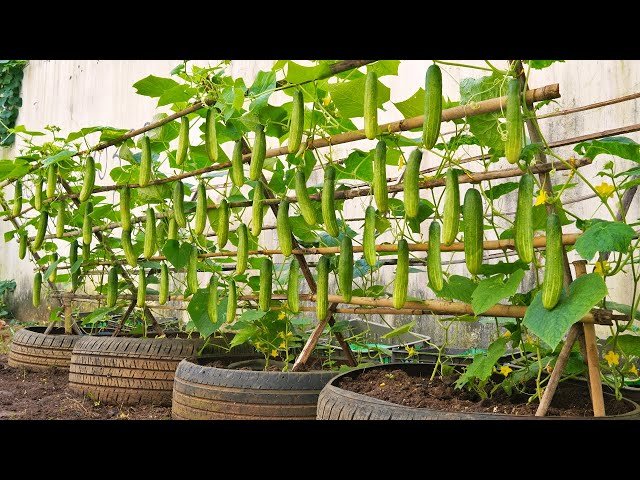
Cucumbers are natural climbers, and utilizing vertical space is a secret to growing tons of cucumbers in small areas. Vertical gardening not only increases yield but also improves air circulation, reduces disease risk, and makes harvesting easier.
- Trellises: Install a trellis in your container or balcony. Wooden stakes, metal grids, or bamboo poles work well.
- Netting or String Support: Use garden netting or sturdy strings for the vines to climb. Tie the stems gently to guide growth.
- Pruning and Training: Regularly train vines onto the trellis and prune lateral shoots to encourage more flowers and fruit.
Vertical gardening transforms a small area into a high-yielding cucumber farm, allowing you to grow significantly more than traditional ground-level planting.
Watering and Nutrition
Cucumbers are thirsty plants and require consistent watering to produce juicy, crisp fruits. Here’s how to keep your container-grown cucumbers healthy:
- Watering:
- Keep the soil consistently moist but not soggy.
- Water deeply at the base of the plant to encourage strong root development.
- Mulch the soil surface with straw or organic material to retain moisture.
- Fertilization:
- Use balanced liquid fertilizers or organic compost every 2–3 weeks.
- Cucumbers are heavy feeders, especially during flowering and fruiting stages.
- Foliar feeding with diluted fertilizer can provide an extra nutrient boost.
Pollination: Ensuring Fruit Production
In order to produce cucumbers, flowers must be pollinated. Outdoor plants often rely on bees and insects, but indoor or balcony setups may require manual pollination:
- Identify Flowers: Male flowers appear first, followed by female flowers with a small swelling at the base.
- Manual Pollination: Use a small brush or cotton swab to transfer pollen from male to female flowers.
- Timing: Pollinate in the morning when flowers are fully open for best results.
Proper pollination ensures a higher number of fruits and prevents wasted flowers.
Managing Pests and Diseases
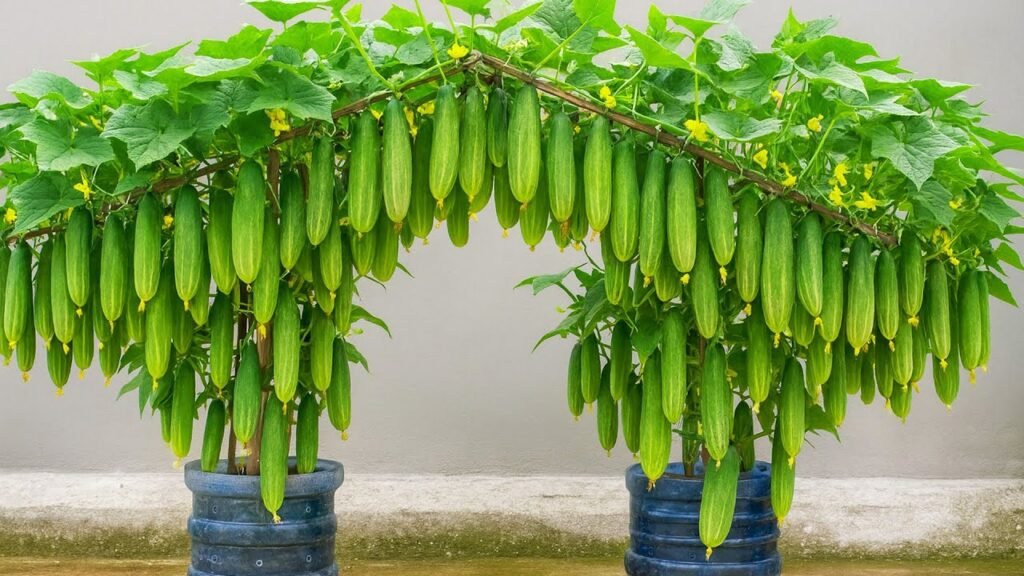
Even without a garden, cucumber plants are susceptible to pests and diseases. Common issues include:
- Aphids and Whiteflies: Can be removed with insecticidal soap or neem oil.
- Powdery Mildew: A fungal disease causing white patches on leaves. Improve air circulation and avoid wetting leaves during watering.
- Cucumber Beetles: Handpick or use natural repellents to protect plants.
Maintaining cleanliness, pruning regularly, and monitoring plants daily can prevent most problems and ensure healthy growth.
Harvesting Your Cucumbers
With proper care, container-grown cucumbers can start producing fruits within 50–70 days, depending on the variety. Key tips for harvesting:
- Size: Harvest cucumbers when they reach the desired size for your variety. Picking them too late can result in bitter or seedy fruits.
- Frequency: Regular harvesting encourages continuous fruiting. Check your plants every 2–3 days.
- Technique: Use a sharp knife or scissors to cut the cucumber from the vine, leaving a small stem attached. Avoid twisting or pulling, which can damage the plant.
Benefits of Growing Cucumbers Without a Garden
This secret method of growing cucumbers in containers or vertical systems offers numerous advantages:
- Space Efficiency: Perfect for apartments, balconies, rooftops, and small patios.
- Higher Yield per Square Foot: Vertical gardening and proper pruning maximize fruit production.
- Accessibility: Easy access for watering, harvesting, and care.
- Reduced Risk of Soil-Borne Diseases: Controlled container soil reduces exposure to pathogens.
- Sustainability: Grow fresh, organic cucumbers without relying on store-bought produce.
Pro Tips for Tons of Cucumbers
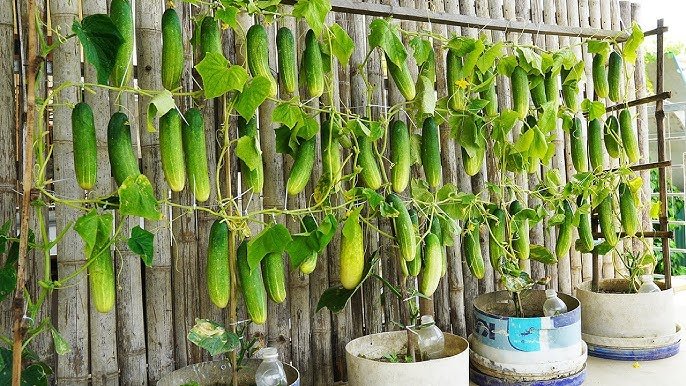
- Rotate containers to ensure all sides receive sunlight.
- Add compost or organic mulch to improve soil fertility and retain moisture.
- Keep a regular pruning and training schedule to promote continuous fruiting.
- Consider companion planting with herbs like basil or nasturtium to deter pests naturally.
Conclusion
Growing tons of cucumbers without a garden is entirely possible with the right approach, proper care, and a little creativity. By using containers, vertical support systems, and attentive maintenance, anyone—even those without outdoor space—can enjoy a bountiful harvest of fresh, crisp cucumbers.
Whether you’re a city dweller with a small balcony or someone looking to maximize indoor gardening, this secret method allows you to grow cucumbers efficiently, sustainably, and successfully. From selecting the right variety to proper watering, nutrition, pollination, and harvesting, every step contributes to producing delicious cucumbers that are fresher and healthier than anything you can buy at the store.
So, don’t let a lack of garden space stop you—start your container or vertical cucumber farm today and enjoy the satisfaction of growing your own food, right at home.
